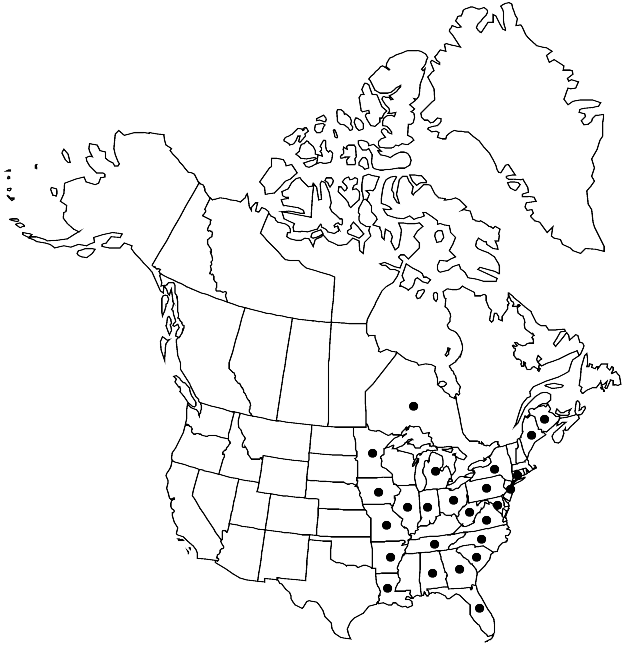Difference between revisions of "Cyrto-hypnum minutulum"
Contr. Univ. Michigan Herb. 17: 66. 1990.
FNA>Volume Importer |
imported>Volume Importer |
||
| (2 intermediate revisions by 2 users not shown) | |||
| Line 56: | Line 56: | ||
|publication year=1990 | |publication year=1990 | ||
|special status= | |special status= | ||
| − | |source xml=https:// | + | |source xml=https://bitbucket.org/aafc-mbb/fna-data-curation/src/2e0870ddd59836b60bcf96646a41e87ea5a5943a/coarse_grained_fna_xml/V28/V28_592.xml |
|genus=Cyrto-hypnum | |genus=Cyrto-hypnum | ||
|species=Cyrto-hypnum minutulum | |species=Cyrto-hypnum minutulum | ||
Latest revision as of 21:36, 5 November 2020
Stems weakly and irregularly 2-pinnate, stems and branches smooth; paraphyllia 2–3(–5) cells in length, cells 2:1, only apical cell papillose. Stem leaves erect-incurved when dry, broadly ovate, 0.3–0.5(–0.6) mm; apex ± abruptly short- and broadly acuminate; costa 4/5 leaf length. Branch leaves erect-incurved when dry, 0.2–0.3 mm; apex acute; costa 3/4 leaf length, straight, covered with quadrate cells apically, projecting as low crests. Perichaetial leaves with margins subentire basally, serrulate distally. Seta smooth. Capsule with endostome cilia 1–2(–3).
Phenology: Capsules mature early spring–fall [Feb–Aug(-Oct)].
Habitat: Moist woods, rotten logs, rock, limestone, base of trees
Elevation: low to moderate elevations
Distribution

N.B., Ont., Ala., Ark., Conn., Fla., Ga., Ill., Ind., Iowa, La., Maine, Md., Mich., Minn., Mo., N.J., N.Y., N.C., Ohio, Pa., S.C., Tenn., Va., W.Va., Mexico, West Indies, Central America, n, c South America, Europe.
Discussion
Cyrto-hypnum minutulum is often confused with others in the family because of its wide range in eastern North America. In the southernmost part of the flora area, C. involvens is distinguished by quadrate-celled paraphyllia and a rough seta. Cyrto-hypnum pygmaeum is more delicate with elaborate branching, leaves erect when dry rather than more or less incurved, and papillose branches and stems. Rauiella scita has laminal cells strongly bulging, is more robust, 1-pinnate with larger, quadrate-celled paraphyllia, and has longer acuminate stem leaves. All the true species of Thuidium have branched paraphyllia and cells papillose only abaxially. Haplocladium (Leskeaceae) has 1-papillose laminal cells. Similarly, plants of Elodium blandowii (Helodiaceae) have 1-papillose laminal cells and are branched and long-celled.
Selected References
None.